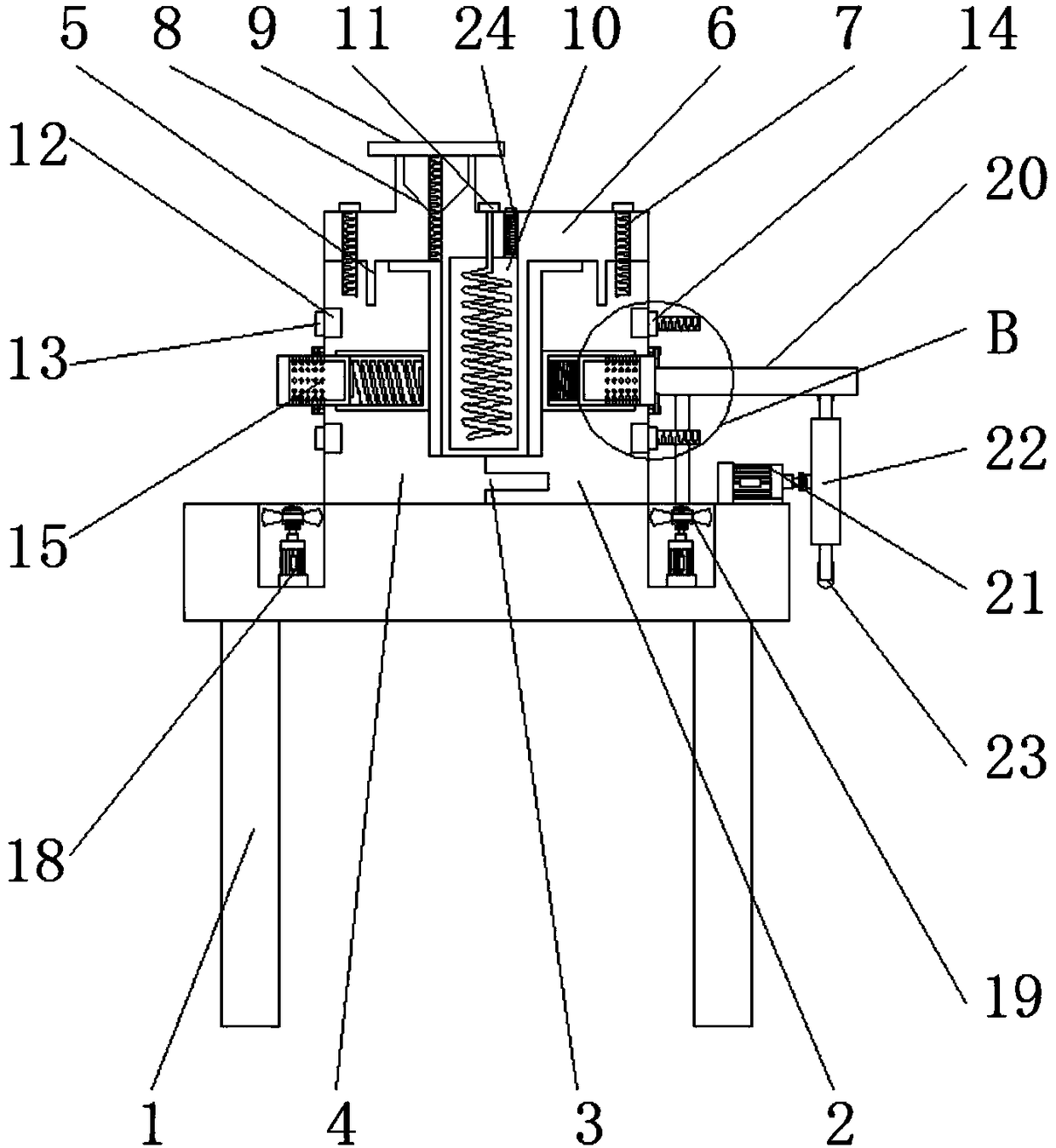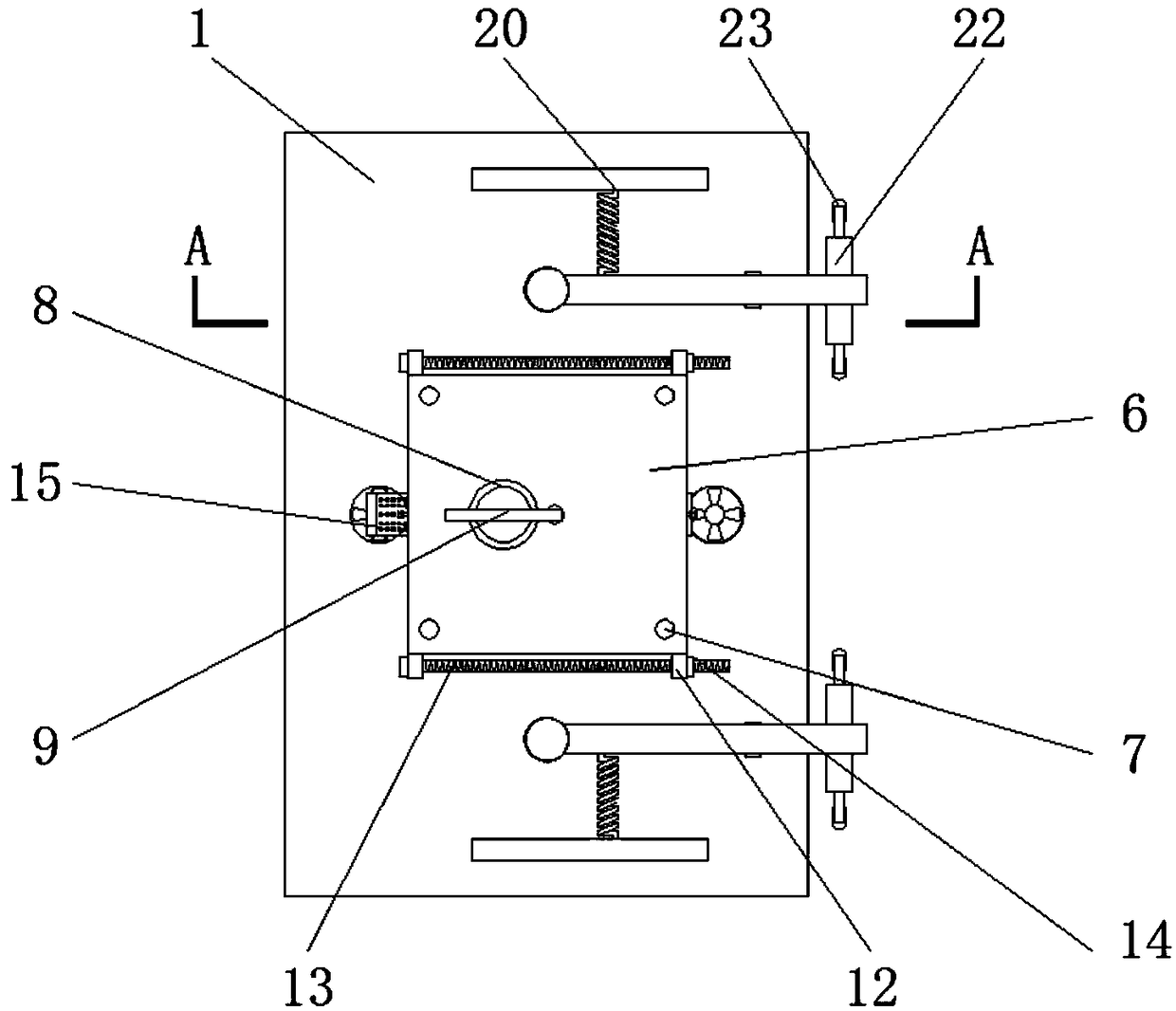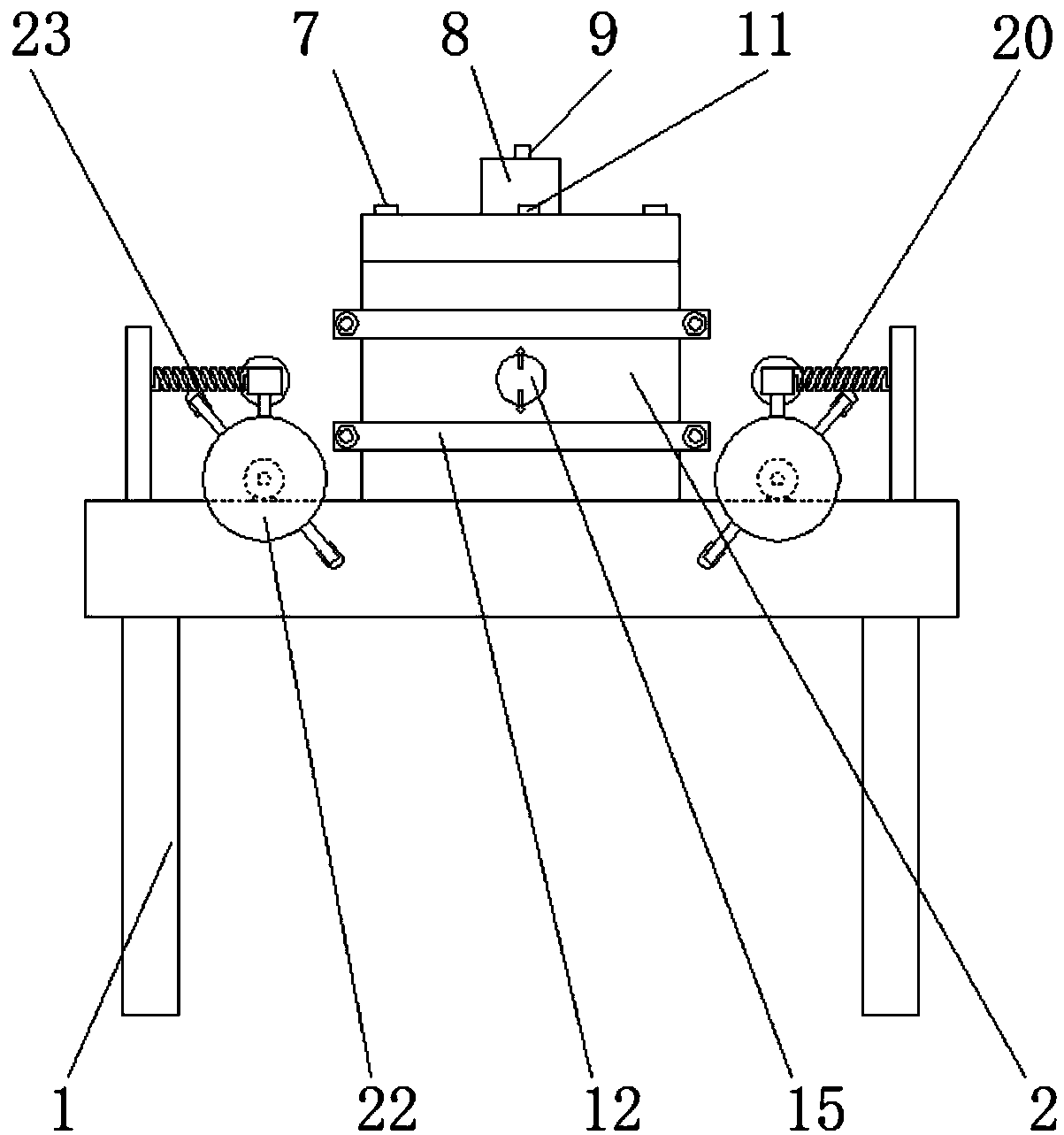Production device for casting castings and avoiding generating cavities in castings
A production device and casting technology, applied in the field of casting casting, can solve the problems of mold dislocation, fast cooling speed, slow cooling time of raw materials, etc., and achieve the effect of accurate mold installation position, convenient installation and disassembly, and good finished product effect
- Summary
- Abstract
- Description
- Claims
- Application Information
AI Technical Summary
Problems solved by technology
Method used
Image
Examples
Embodiment Construction
[0037] The technical solutions in the embodiments of the present invention will be clearly and completely described below with reference to the accompanying drawings in the embodiments of the present invention. Obviously, the described embodiments are only a part of the embodiments of the present invention, but not all of the embodiments. Based on the embodiments of the present invention, all other embodiments obtained by those of ordinary skill in the art without creative efforts shall fall within the protection scope of the present invention.
[0038] see Figure 1-9, the present invention provides a technical solution: a production device for casting castings that prevents cavities from being generated in castings, including a table frame 1, a first mold 2, a first bump 3, a second mold 4, a second bump 5, The third mold 6, the first bolt 7, the feeding port 8, the first connecting rod 9, the water tank 10, the heating rod 11, the first connecting plate 12, the second bolt ...
PUM
 Login to View More
Login to View More Abstract
Description
Claims
Application Information
 Login to View More
Login to View More - R&D
- Intellectual Property
- Life Sciences
- Materials
- Tech Scout
- Unparalleled Data Quality
- Higher Quality Content
- 60% Fewer Hallucinations
Browse by: Latest US Patents, China's latest patents, Technical Efficacy Thesaurus, Application Domain, Technology Topic, Popular Technical Reports.
© 2025 PatSnap. All rights reserved.Legal|Privacy policy|Modern Slavery Act Transparency Statement|Sitemap|About US| Contact US: help@patsnap.com



